荷兰Droog大师设计展DroogDroogDroogDroogDroogDroogDroogDroog
发起人:黑店老板 回复数:23
浏览数:3756
最后更新:2006/03/30 03:41:01 by
“人文触觉”荷兰Droog大师设计展
“人文触觉”简介
荷兰设计大师团队Droog的亚洲及澳洲巡回作品展 ——“人文触觉”,所展出的作品都是Droog旗下知名设计师的精心设计,展览的目的在于加强使用者与设计作品之间的互动关系。整个展览共有100多件展品,分为“记忆”、“互动”、“触感”、“功能”、“体验”、“不尽完美”、“熟悉”和“装饰”几大部分,其设计的特点是适合不同的场所、拆装简便、简单易行,使用者对设计作品拥有极强的自主操作性。
装置是“人文触觉”展出的重要组成部分。参观者通过接触和移动与产品进行互动,从而激发对该设计产品的进一步探索与思考。装置由一组功能类似产品布景的物品构成,这些物品通常是一组家具,如桌子、橱柜、灯、椅子等等。它们一起构成了展示Droog产品的或小型或大型的房间。在这些模拟的房间里,参观者可以重新发现自己日常使用的家居用品竟然都具备了一些特殊的功能,或者是由特殊的材料组成,或者就是变的更加奇妙有趣。装置部分是由年轻的荷兰设计师Simon Heijdens所设计。
“人文触觉”荷兰Droog大师设计展是一次中荷两国里程碑式的文化和教育交流活动,其目的是为了加强两国之间的文化认识和理解。本次艺术展的上海部分由中国对外艺术展览中心主办,外滩18创意中心、荷兰Droog设计基金会和上海比翼艺术发展有限公司承办。由名业商务咨询(上海)有限公司担任公关及推广顾问。同时,此次活动也得到了荷兰文化基金会,荷兰王国教育、文化、科学部,荷兰王国外交部及荷兰驻上海总领事馆的大力支持。
在上海展出后,“人文触觉”将会继续于深圳及台北展出。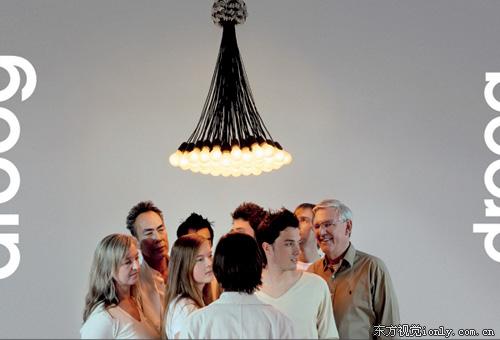
“人文触觉”简介
荷兰设计大师团队Droog的亚洲及澳洲巡回作品展 ——“人文触觉”,所展出的作品都是Droog旗下知名设计师的精心设计,展览的目的在于加强使用者与设计作品之间的互动关系。整个展览共有100多件展品,分为“记忆”、“互动”、“触感”、“功能”、“体验”、“不尽完美”、“熟悉”和“装饰”几大部分,其设计的特点是适合不同的场所、拆装简便、简单易行,使用者对设计作品拥有极强的自主操作性。
装置是“人文触觉”展出的重要组成部分。参观者通过接触和移动与产品进行互动,从而激发对该设计产品的进一步探索与思考。装置由一组功能类似产品布景的物品构成,这些物品通常是一组家具,如桌子、橱柜、灯、椅子等等。它们一起构成了展示Droog产品的或小型或大型的房间。在这些模拟的房间里,参观者可以重新发现自己日常使用的家居用品竟然都具备了一些特殊的功能,或者是由特殊的材料组成,或者就是变的更加奇妙有趣。装置部分是由年轻的荷兰设计师Simon Heijdens所设计。
“人文触觉”荷兰Droog大师设计展是一次中荷两国里程碑式的文化和教育交流活动,其目的是为了加强两国之间的文化认识和理解。本次艺术展的上海部分由中国对外艺术展览中心主办,外滩18创意中心、荷兰Droog设计基金会和上海比翼艺术发展有限公司承办。由名业商务咨询(上海)有限公司担任公关及推广顾问。同时,此次活动也得到了荷兰文化基金会,荷兰王国教育、文化、科学部,荷兰王国外交部及荷兰驻上海总领事馆的大力支持。
在上海展出后,“人文触觉”将会继续于深圳及台北展出。

Droog简介
许多人通过出版物、我们的演讲和网站、甚至从别人的口碑中,知道了Droog。可是并非每个人都清楚Droog到底代表着什么。的确,Droog很难用只言片语解释,这是因为我们所从事的活动非常多样化:除了组织展览和活动、经营作品系列、推广年轻的设计师、接受机构和组织的委约进行设计项目、发起辩论、出版书籍、生产和分销外,我们还是爱恩德霍芬设计学院(Design Academy Eindhoven)大师班的负责人。此外,我们在阿姆斯特丹开设了一个画廊和商店,在这里不仅举办展览,还时不时组织一些晚宴。实际上,我们没有为从事的活动设定界限。
以上虽说看起来有些杂乱,但还是有清晰的纹理的。
从头说起
1993年,我们的活动开始了。我们目睹一个新的设计思维在荷兰崛起。当时,一批从不同设计院校毕业的年轻设计师的作品由于强调概念而鹤立鸡群。他们的设计简单且清晰,并抗拒那种刻意表现设计的设计(Design with a capital D):例如流畅的式样、完美的构建、为“外型而外型”的作品。这无疑是一次重大的突破,也确实是设计的一种新方向。
其中一件富突破性的作品是Tejo Remy的抽屉柜:用一条亚麻带把20个盒子绑在20个二手抽屉周围。这个柜子世界闻名,被许多博物馆争相展出,在那个时期引起了设计界的一次骚动。
设计者说他并不想设计,只想即兴创作。当他找到这些抽屉时就接受了它们的状态。使用者可以按自己意思在上面作出增减。如何组建这些抽屉也完全由使用者决定。某个人也许会放一台电视机进去,我们则曾在某个展览中在柜子内加一个酒架。
我们决定在米兰国际家具展期间展出新一代设计师的作品。在此之前,我们同意:“如果我们判断错误、他们也认为展出不值一文的话,我们就放弃了。如果它们受到欢迎,我们就继续下去。” 我们在米兰展出的14件作品包括Remy的“抽屉柜”、“碎布椅”和“牛奶瓶灯”,Marcel Wanders的“旧灯堆出的阴影”,Richard Hutten的“桌-椅”,以及Arnout Visser的“油和醋装置”和“称信用的天平”,后面两件作品都是基于物理学、并使用实验室瓶子。我们用荷兰文“droog”(“干”)来为我们的演示来命名,因为这些设计都非常“干巴巴”,没有任何虚饰。并且,“droog”也有“dry wit”的意思。
首次展出获得了极大的成功。法国解放报提议给这群名为Droog的“不知名者”一个奖牌,以志他们精神上的“savoir vivre”。
Droog研究室
受米兰展览积极反响的鼓舞,我们建立了以激励创新设计为目的之Droog设计基金会。我们也因此开始实验性的项目,以此激励设计师更具创新意识,也使我们的活动更具连贯性。第一个项目名为“干科技”(Dry Tech),是和代夫特科技大学的航空航天实验室合作的。最初的内容是以工艺师的手法处理高科技纤维,现由意大利Cappellini 公司销售的、Marcel Wanders设计的著名绳结椅子就是源自这个项目。
Dry Tech标志着一个延续不断的多元化系列项目的开始,其后的项目包括为纽约时报千年竞赛创作视觉概念、为意大利箱包和成衣制造商(Mandarina Duck)设计在巴黎的旗舰店、为布鲁塞尔欧盟委员会大厦设计咖啡吧,以及一年一度在米兰家具展期间的主题项目(例如“慢慢来”(Go Slow)、“物有所值”(Value for Money)、“Droog酒店”(Hotel Droog)和“请创作”(Do Create))。这些项目内容都可以在我们的网站上找到。
一直以来,我们都不会通过重复和精练既有的模式来发展Droog的概念,而是不断通过新概念、新产品、新材料、新设计师和新合作伙伴作出新尝试。我们工作的核心是Droog作品系列,包括150多件产品、原型和概念,都是从Droog的许多项目或设计工作中精选出来的。
为了提高我们的“能见度”,我们在2004年于阿姆斯特丹开了一家画廊和店。在这里,我们可以永久展示并销售部分作品,亦可为受到我们关注的年轻设计师举办展览。店里有一间阅览室,偶尔也会用来举办晚宴,有些是组织和机构的私人晚宴,有些则向公众开放。当然,这些绝对是不一般的晚餐,因为它们都与Droog的精神有密切关系,不单倾向于概念性,也极度注重内容、演示和与公众之间的互动。
Droog品牌
从一开始,我们就认识到生产和分销我们自己的产品的重要性。但当时我们认为凡事由自己操作并不有利于达成目标。因此,我们过去总是委托他人负责这些部分,这也是为什么大家会发现Droog的产品是由其它(如Cappellini 和 Moooi)公司生产。为了消除这样操作造成的混淆,两年前,我们决定由自己负责Droog产品的生产和分销。为此,我们成立了Droog有限公司,现在生产着超过50种Droog产品,还有许多新产品会陆续被推出。当然,我们也增加了一些以前由其他合作伙伴生产的产品,因为它们一直都是我们产品系列的一部分。
我们从没有因为纯商业原因而把任何设计放进产品系列之中。一直以来,我们都是先考虑概念(concept)和实行(execution),然后,我们再会看看是否可以用一个好价格/质量生产出产品。如果事实证明因价格、技术或概念原因无法生产出一个设计,那这个设计就会纳入限量发行版本之列(带有作者签名),例如Tejo Remy的手工抽屉柜和Marti Guixe的“do frame”带子,后者可以用来简单地框制照片和海报。
Droog精神
所有Droog的项目都反映着Droog精神。在过去的12年中,Droog精神曾被媒体用不同的方式描述:勇敢的、睿智地具挑衅性的、离奇的、有型有格的、怪异的、时尚的、设计中的摇滚,等等。但对我们来说,重点永远是创意、简单直接地表达出来的清晰且新颖的概念,以及作品的实用性。只要满足了以上要求,任何东西都会被接受。
当1993年我们刚开始的时候,概念设计几乎不算什么。部分由于Droog的贡献,世界各地的年轻设计师开始和Droog精神同步工作。可以说,Droog开始了整个运动。在Droog首次展览上展出的部分作品现在被公认为是90年代初的标志性作品。而在我们首展上起到重要作用的多位年轻设计师,如Marcel Wanders, Hella Jongerius, Richard Hutten 和Jurgen Bey,从那以后就成为当代设计的关键人物。
我们现在已经不仅和荷兰设计师合作,我们的网络已经逐渐拓展到世界的所有角落,目前已经网罗了约150名独立设计师。
我们的产品种类繁多,包括家具、灯具、墙砖、墙纸、桌布、鸟屋、阳伞等等。它们的共同点是为“人”而做。Droog的产品非常特别但却容易理解,它们已经超越了设计通常的意义,——一种风格。它们与“人”非常亲近,因为它们可以被抚摸、被使用,因为它们并不完美,也因为它们令人感觉熟悉、可以激起回忆,可以制造出一种体验并允许使用者参与,又或者因为它们简单、实用、具有意义、诗意和幽默。这些产品在向全世界述说着可以被理解、并一直流传下去的故事。“被使用”就是产品存在的意义,这也是为什么故事都围绕着使用者,而这些使用者就是我们。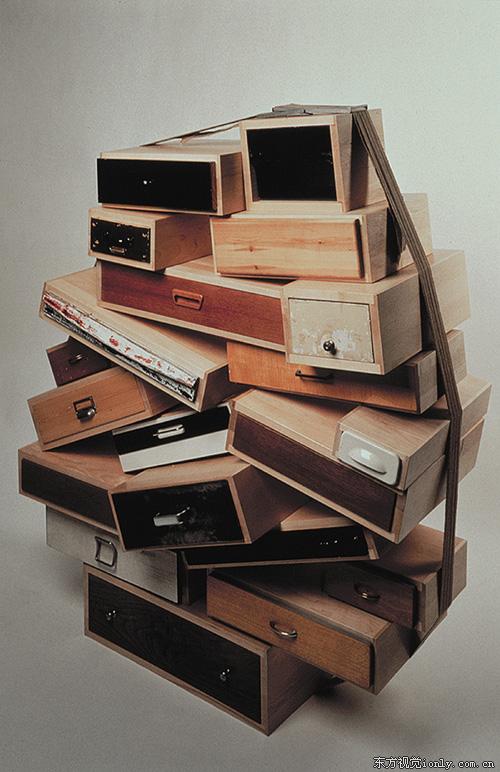
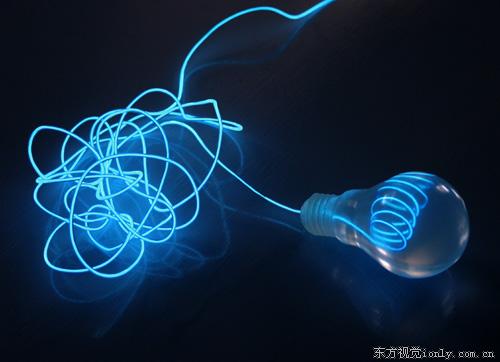
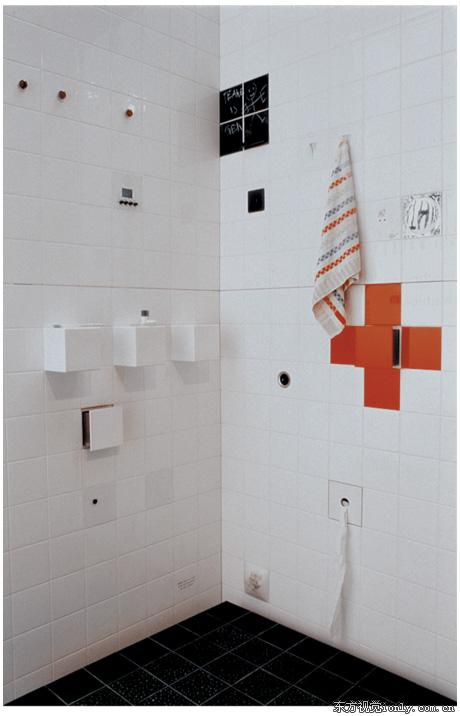
许多人通过出版物、我们的演讲和网站、甚至从别人的口碑中,知道了Droog。可是并非每个人都清楚Droog到底代表着什么。的确,Droog很难用只言片语解释,这是因为我们所从事的活动非常多样化:除了组织展览和活动、经营作品系列、推广年轻的设计师、接受机构和组织的委约进行设计项目、发起辩论、出版书籍、生产和分销外,我们还是爱恩德霍芬设计学院(Design Academy Eindhoven)大师班的负责人。此外,我们在阿姆斯特丹开设了一个画廊和商店,在这里不仅举办展览,还时不时组织一些晚宴。实际上,我们没有为从事的活动设定界限。
以上虽说看起来有些杂乱,但还是有清晰的纹理的。
从头说起
1993年,我们的活动开始了。我们目睹一个新的设计思维在荷兰崛起。当时,一批从不同设计院校毕业的年轻设计师的作品由于强调概念而鹤立鸡群。他们的设计简单且清晰,并抗拒那种刻意表现设计的设计(Design with a capital D):例如流畅的式样、完美的构建、为“外型而外型”的作品。这无疑是一次重大的突破,也确实是设计的一种新方向。
其中一件富突破性的作品是Tejo Remy的抽屉柜:用一条亚麻带把20个盒子绑在20个二手抽屉周围。这个柜子世界闻名,被许多博物馆争相展出,在那个时期引起了设计界的一次骚动。
设计者说他并不想设计,只想即兴创作。当他找到这些抽屉时就接受了它们的状态。使用者可以按自己意思在上面作出增减。如何组建这些抽屉也完全由使用者决定。某个人也许会放一台电视机进去,我们则曾在某个展览中在柜子内加一个酒架。
我们决定在米兰国际家具展期间展出新一代设计师的作品。在此之前,我们同意:“如果我们判断错误、他们也认为展出不值一文的话,我们就放弃了。如果它们受到欢迎,我们就继续下去。” 我们在米兰展出的14件作品包括Remy的“抽屉柜”、“碎布椅”和“牛奶瓶灯”,Marcel Wanders的“旧灯堆出的阴影”,Richard Hutten的“桌-椅”,以及Arnout Visser的“油和醋装置”和“称信用的天平”,后面两件作品都是基于物理学、并使用实验室瓶子。我们用荷兰文“droog”(“干”)来为我们的演示来命名,因为这些设计都非常“干巴巴”,没有任何虚饰。并且,“droog”也有“dry wit”的意思。
首次展出获得了极大的成功。法国解放报提议给这群名为Droog的“不知名者”一个奖牌,以志他们精神上的“savoir vivre”。
Droog研究室
受米兰展览积极反响的鼓舞,我们建立了以激励创新设计为目的之Droog设计基金会。我们也因此开始实验性的项目,以此激励设计师更具创新意识,也使我们的活动更具连贯性。第一个项目名为“干科技”(Dry Tech),是和代夫特科技大学的航空航天实验室合作的。最初的内容是以工艺师的手法处理高科技纤维,现由意大利Cappellini 公司销售的、Marcel Wanders设计的著名绳结椅子就是源自这个项目。
Dry Tech标志着一个延续不断的多元化系列项目的开始,其后的项目包括为纽约时报千年竞赛创作视觉概念、为意大利箱包和成衣制造商(Mandarina Duck)设计在巴黎的旗舰店、为布鲁塞尔欧盟委员会大厦设计咖啡吧,以及一年一度在米兰家具展期间的主题项目(例如“慢慢来”(Go Slow)、“物有所值”(Value for Money)、“Droog酒店”(Hotel Droog)和“请创作”(Do Create))。这些项目内容都可以在我们的网站上找到。
一直以来,我们都不会通过重复和精练既有的模式来发展Droog的概念,而是不断通过新概念、新产品、新材料、新设计师和新合作伙伴作出新尝试。我们工作的核心是Droog作品系列,包括150多件产品、原型和概念,都是从Droog的许多项目或设计工作中精选出来的。
为了提高我们的“能见度”,我们在2004年于阿姆斯特丹开了一家画廊和店。在这里,我们可以永久展示并销售部分作品,亦可为受到我们关注的年轻设计师举办展览。店里有一间阅览室,偶尔也会用来举办晚宴,有些是组织和机构的私人晚宴,有些则向公众开放。当然,这些绝对是不一般的晚餐,因为它们都与Droog的精神有密切关系,不单倾向于概念性,也极度注重内容、演示和与公众之间的互动。
Droog品牌
从一开始,我们就认识到生产和分销我们自己的产品的重要性。但当时我们认为凡事由自己操作并不有利于达成目标。因此,我们过去总是委托他人负责这些部分,这也是为什么大家会发现Droog的产品是由其它(如Cappellini 和 Moooi)公司生产。为了消除这样操作造成的混淆,两年前,我们决定由自己负责Droog产品的生产和分销。为此,我们成立了Droog有限公司,现在生产着超过50种Droog产品,还有许多新产品会陆续被推出。当然,我们也增加了一些以前由其他合作伙伴生产的产品,因为它们一直都是我们产品系列的一部分。
我们从没有因为纯商业原因而把任何设计放进产品系列之中。一直以来,我们都是先考虑概念(concept)和实行(execution),然后,我们再会看看是否可以用一个好价格/质量生产出产品。如果事实证明因价格、技术或概念原因无法生产出一个设计,那这个设计就会纳入限量发行版本之列(带有作者签名),例如Tejo Remy的手工抽屉柜和Marti Guixe的“do frame”带子,后者可以用来简单地框制照片和海报。
Droog精神
所有Droog的项目都反映着Droog精神。在过去的12年中,Droog精神曾被媒体用不同的方式描述:勇敢的、睿智地具挑衅性的、离奇的、有型有格的、怪异的、时尚的、设计中的摇滚,等等。但对我们来说,重点永远是创意、简单直接地表达出来的清晰且新颖的概念,以及作品的实用性。只要满足了以上要求,任何东西都会被接受。
当1993年我们刚开始的时候,概念设计几乎不算什么。部分由于Droog的贡献,世界各地的年轻设计师开始和Droog精神同步工作。可以说,Droog开始了整个运动。在Droog首次展览上展出的部分作品现在被公认为是90年代初的标志性作品。而在我们首展上起到重要作用的多位年轻设计师,如Marcel Wanders, Hella Jongerius, Richard Hutten 和Jurgen Bey,从那以后就成为当代设计的关键人物。
我们现在已经不仅和荷兰设计师合作,我们的网络已经逐渐拓展到世界的所有角落,目前已经网罗了约150名独立设计师。
我们的产品种类繁多,包括家具、灯具、墙砖、墙纸、桌布、鸟屋、阳伞等等。它们的共同点是为“人”而做。Droog的产品非常特别但却容易理解,它们已经超越了设计通常的意义,——一种风格。它们与“人”非常亲近,因为它们可以被抚摸、被使用,因为它们并不完美,也因为它们令人感觉熟悉、可以激起回忆,可以制造出一种体验并允许使用者参与,又或者因为它们简单、实用、具有意义、诗意和幽默。这些产品在向全世界述说着可以被理解、并一直流传下去的故事。“被使用”就是产品存在的意义,这也是为什么故事都围绕着使用者,而这些使用者就是我们。



"A Human Touch" Droog on Tour in the Chinese Mainland
-- The Droog Design Experience from Holland
Introduction to "A Human Touch"
“A Human Touch” Droog on Tour in the Chinese Mainland is a compact traveling exhibition through Asia and Australia. From the Droog collection products, all by renowned designers, are chosen which intensify the relation between the user and the product. The exhibition features more than 100 exhibits, and is divided into the categories of “memories”, “interaction”, “tactility”, “function”, “experience”, “imperfection”, “familiarity” and “ornament”. All products are produced by Droog.
The installation reflects the human touch as well. It consists of different areas which each expresses a particular atmosphere and offer a lot of interaction with the visitor. It invites people to move and touch. It stimulates an adventurous encounter with the products. The installation consists of a group of objects that function like a filmset for the products. These objects are a family of furniture: tables, cupboards, lamps, chairs. Together they form small or larger rooms which present Droog products the way they are meant to be. The installation is designed by the young Dutch designer Simon Heijdens.
“A Human Touch” is a cultural and educational exchange initiative representing a milestone in cultural exchange between China and the Netherlands. This exhibition in Shanghai is organized by China International Exhibition Agency, implemented by Bund 18 Creative Center, Droog Design Foundation and Shanghai BizArt Consulting LTD. MINT Business Consulting (Shanghai) Co Ltd is the Public Relations and Promotion Consultant of this exhibition. With the support of The Netherlands Culture Fund, The Netherlands Ministry of Education, Culture and Science, The Netherlands Ministry of Foreign Affairs, and the Consulate General of Netherlands, this cultural event aims to refresh cultural perceptions and strengthen mutual understanding.
The Shanghai part of the exhibition tour at Bund 18 Creative Center will be followed by exhibitions in Shenzhen and Taipei.
Droog Design Foundation
Many people know Droog. From publications, from our lectures, via the website, by word of mouth. But what exactly Droog stands for is by no means clear to everybody. It is difficult to explain it in a few sentences, for our activities are quite diverse: we organise exhibitions and events, manage a collection, promote young designers, carry out design commissions for companies and institutions, initiate debate, publish books, produce and distribute, are head of a masters course at the Design Academy Eindhoven and we have also opened a gallery and shop in Amsterdam where not only exhibitions are held but from time to time even dinners are organised. Actually we see no limits to our activities.
That can appear confusing. Yet there is a clear line.
How it started
We started our activities in 1993. We had seen how a new design mentality was arising in the Netherlands. The work of a number of young designers who had graduated from various design schools stood out because of an emphasis on the concept. They were notable for a simple, clear execution of their designs and an aversion to Design with a capital D, that is to say, Design that wants to look designed: smooth styling, perfect construction, form practiced for its own sake. It was a clear break from the past, a genuinely new approach to design.
One very radical product was certainly Tejo Remy’s chest of drawers: twenty second-hand drawers around which twenty boxes have been built and which are bound together by a linen band. This chest, which has become world famous and is included in numerous museum collections, caused a commotion in the design world at the time.
The designer had declared that he didn’t want to design, but to improvise. He accepted the drawers as he found them, the user could remove them or add other things as he saw fit. Also how the chest was constructed was completely left to the user. One owner might place a television set in it, while we ourselves added a wine rack for one of their exhibitions.
We decided to show the work of the new generation of designers during the International Furniture Fair in Milan. Before we did so, we agreed: ‘If we’ve made a mistake and they think it’s worth nothing we’ll shut up shop. If it catches on, we’ll keep going’. The fourteen objects we showed in Milan ranged from Remy’s bundle of found wooden drawers and his ragchair and milkbottlelamp to Marcel Wanders’ Set Up Shades stack of ready-made lamps, Richard Hutten’s Table-Chair and the oil and vinegar set and the letter scales by Arnout Visser, both of which were based on physics and executed in laboratory glass. We called our presentation after the Dutch word ‘droog’ since, in our opinion, the designs were executed very ‘dryly’, that is to say without frills. The word ‘droog’ could be connected to ‘dry’ in the sense of dry wit, or wry, subtle sense of humour.
This first presentation was an overwhelming success. The French newspaper Liberation suggested that the ‘unknowns’ called Droog should be given a medal for spiritual ‘savoir vivre’.
Droog Lab
Cheered by the response to the Milan exhibition we established the Droog Design Foundation with the goal to stimulate innovative design. We therefore began initiating experimental projects, which would stimulate designers to be innovative and would introduce a coherence to our activities. The first project was Dry Tech, carried out in collaboration with the Aviation and Aerospace Laboratory at the University of Technology in Delft. The starting point was a craftsman’s approach to high-tech fibres. Marcel Wanders’ famous ‘knotted’ chair, which is now being marketed by the Italian company Cappellini, came out of this project.
Dry Tech marked the beginning of an ongoing series of diverse projects: from creating visionary concepts for a New York Times millennium competition and designing a flagship store in Paris for Mandarina Duck, the Italian producer of luggage and clothing, the coffee bar for the European Union Council building in Brussels to the annual thematic projects during the furniture fair in Milan, with such titles as Go Slow, Value for Money, Hotel Droog and Do Create. All these projects can be found on our website.
We have since developed the Droog concept not by repeating and refining the original formula but by experimenting with new concepts, new products, new materials, new designers and new partners. The core of our work is the Droog collection with more than 150 products, prototypes and concepts, which are either resulting from Droog’s many projects or designer’s work that has been selected by us.
In order to increase our visibility, we opened a gallery and shop in Amsterdam in 2004. Here a part of our collection is on permanent display and for sale. We also organize exhibitions by young designers who have come to our notice. There is a reading room and now and then dinners are held. Sometimes these are private dinners for organizations and companies, sometimes we make them open to the public. Naturally these are no ordinary dinners. They are linked to the Droog mentality, They have a conceptual slant, with a lot of attention paid to the content, presentation and interaction with the public.
Droog label
From the beginning we have acknowledged the importance of production and distribution of the products in our collection. But we found at the time that it did not suit their objectives to start doing this ourselves. For this reason we have always delegated this to others, which is why one comes across Droog products produced by other companies such as Cappellini and Moooi. In order to clear up all the confusion this practice may have caused, we decided two years ago to take charge of the production and distribution of the Droog collection. For this we establ
-- The Droog Design Experience from Holland
Introduction to "A Human Touch"
“A Human Touch” Droog on Tour in the Chinese Mainland is a compact traveling exhibition through Asia and Australia. From the Droog collection products, all by renowned designers, are chosen which intensify the relation between the user and the product. The exhibition features more than 100 exhibits, and is divided into the categories of “memories”, “interaction”, “tactility”, “function”, “experience”, “imperfection”, “familiarity” and “ornament”. All products are produced by Droog.
The installation reflects the human touch as well. It consists of different areas which each expresses a particular atmosphere and offer a lot of interaction with the visitor. It invites people to move and touch. It stimulates an adventurous encounter with the products. The installation consists of a group of objects that function like a filmset for the products. These objects are a family of furniture: tables, cupboards, lamps, chairs. Together they form small or larger rooms which present Droog products the way they are meant to be. The installation is designed by the young Dutch designer Simon Heijdens.
“A Human Touch” is a cultural and educational exchange initiative representing a milestone in cultural exchange between China and the Netherlands. This exhibition in Shanghai is organized by China International Exhibition Agency, implemented by Bund 18 Creative Center, Droog Design Foundation and Shanghai BizArt Consulting LTD. MINT Business Consulting (Shanghai) Co Ltd is the Public Relations and Promotion Consultant of this exhibition. With the support of The Netherlands Culture Fund, The Netherlands Ministry of Education, Culture and Science, The Netherlands Ministry of Foreign Affairs, and the Consulate General of Netherlands, this cultural event aims to refresh cultural perceptions and strengthen mutual understanding.
The Shanghai part of the exhibition tour at Bund 18 Creative Center will be followed by exhibitions in Shenzhen and Taipei.
Droog Design Foundation
Many people know Droog. From publications, from our lectures, via the website, by word of mouth. But what exactly Droog stands for is by no means clear to everybody. It is difficult to explain it in a few sentences, for our activities are quite diverse: we organise exhibitions and events, manage a collection, promote young designers, carry out design commissions for companies and institutions, initiate debate, publish books, produce and distribute, are head of a masters course at the Design Academy Eindhoven and we have also opened a gallery and shop in Amsterdam where not only exhibitions are held but from time to time even dinners are organised. Actually we see no limits to our activities.
That can appear confusing. Yet there is a clear line.
How it started
We started our activities in 1993. We had seen how a new design mentality was arising in the Netherlands. The work of a number of young designers who had graduated from various design schools stood out because of an emphasis on the concept. They were notable for a simple, clear execution of their designs and an aversion to Design with a capital D, that is to say, Design that wants to look designed: smooth styling, perfect construction, form practiced for its own sake. It was a clear break from the past, a genuinely new approach to design.
One very radical product was certainly Tejo Remy’s chest of drawers: twenty second-hand drawers around which twenty boxes have been built and which are bound together by a linen band. This chest, which has become world famous and is included in numerous museum collections, caused a commotion in the design world at the time.
The designer had declared that he didn’t want to design, but to improvise. He accepted the drawers as he found them, the user could remove them or add other things as he saw fit. Also how the chest was constructed was completely left to the user. One owner might place a television set in it, while we ourselves added a wine rack for one of their exhibitions.
We decided to show the work of the new generation of designers during the International Furniture Fair in Milan. Before we did so, we agreed: ‘If we’ve made a mistake and they think it’s worth nothing we’ll shut up shop. If it catches on, we’ll keep going’. The fourteen objects we showed in Milan ranged from Remy’s bundle of found wooden drawers and his ragchair and milkbottlelamp to Marcel Wanders’ Set Up Shades stack of ready-made lamps, Richard Hutten’s Table-Chair and the oil and vinegar set and the letter scales by Arnout Visser, both of which were based on physics and executed in laboratory glass. We called our presentation after the Dutch word ‘droog’ since, in our opinion, the designs were executed very ‘dryly’, that is to say without frills. The word ‘droog’ could be connected to ‘dry’ in the sense of dry wit, or wry, subtle sense of humour.
This first presentation was an overwhelming success. The French newspaper Liberation suggested that the ‘unknowns’ called Droog should be given a medal for spiritual ‘savoir vivre’.
Droog Lab
Cheered by the response to the Milan exhibition we established the Droog Design Foundation with the goal to stimulate innovative design. We therefore began initiating experimental projects, which would stimulate designers to be innovative and would introduce a coherence to our activities. The first project was Dry Tech, carried out in collaboration with the Aviation and Aerospace Laboratory at the University of Technology in Delft. The starting point was a craftsman’s approach to high-tech fibres. Marcel Wanders’ famous ‘knotted’ chair, which is now being marketed by the Italian company Cappellini, came out of this project.
Dry Tech marked the beginning of an ongoing series of diverse projects: from creating visionary concepts for a New York Times millennium competition and designing a flagship store in Paris for Mandarina Duck, the Italian producer of luggage and clothing, the coffee bar for the European Union Council building in Brussels to the annual thematic projects during the furniture fair in Milan, with such titles as Go Slow, Value for Money, Hotel Droog and Do Create. All these projects can be found on our website.
We have since developed the Droog concept not by repeating and refining the original formula but by experimenting with new concepts, new products, new materials, new designers and new partners. The core of our work is the Droog collection with more than 150 products, prototypes and concepts, which are either resulting from Droog’s many projects or designer’s work that has been selected by us.
In order to increase our visibility, we opened a gallery and shop in Amsterdam in 2004. Here a part of our collection is on permanent display and for sale. We also organize exhibitions by young designers who have come to our notice. There is a reading room and now and then dinners are held. Sometimes these are private dinners for organizations and companies, sometimes we make them open to the public. Naturally these are no ordinary dinners. They are linked to the Droog mentality, They have a conceptual slant, with a lot of attention paid to the content, presentation and interaction with the public.
Droog label
From the beginning we have acknowledged the importance of production and distribution of the products in our collection. But we found at the time that it did not suit their objectives to start doing this ourselves. For this reason we have always delegated this to others, which is why one comes across Droog products produced by other companies such as Cappellini and Moooi. In order to clear up all the confusion this practice may have caused, we decided two years ago to take charge of the production and distribution of the Droog collection. For this we establ
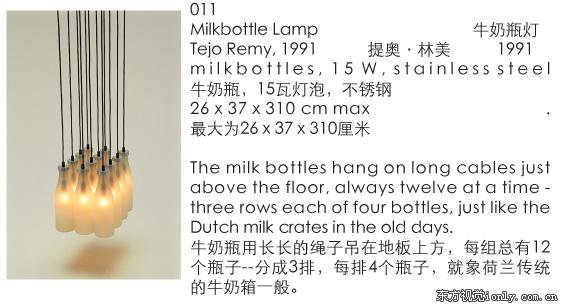
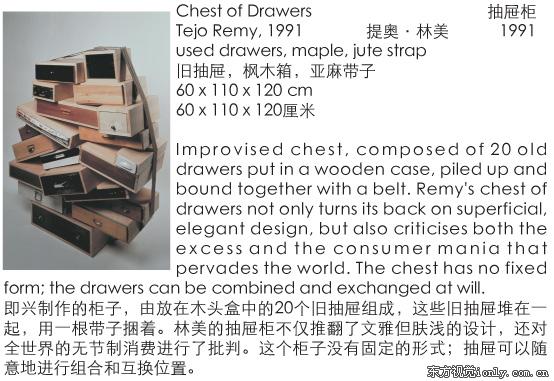
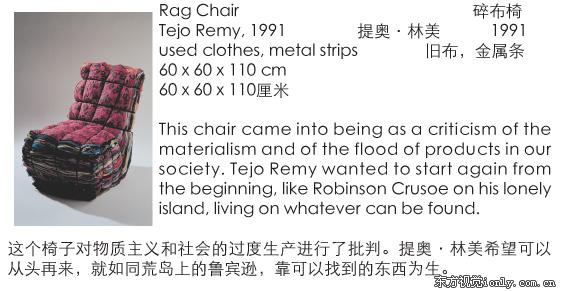
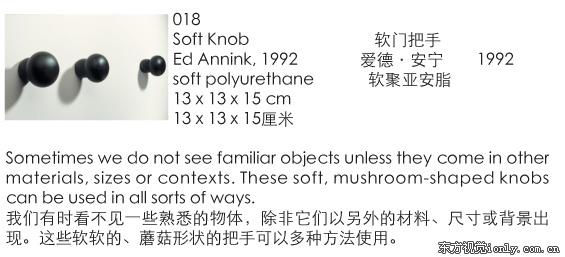
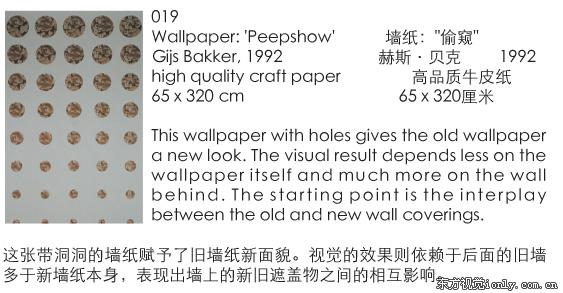
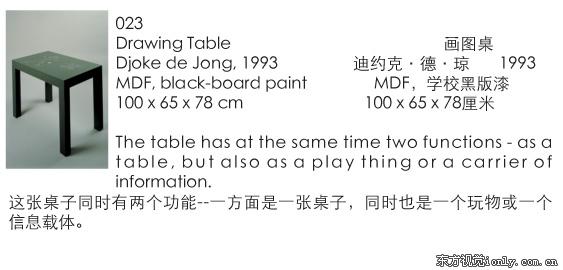
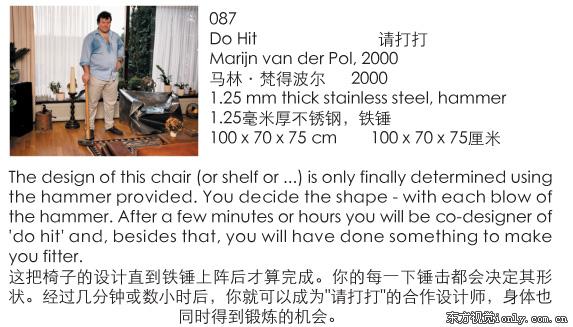
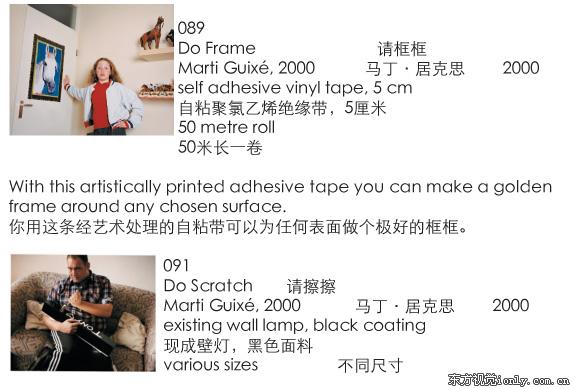
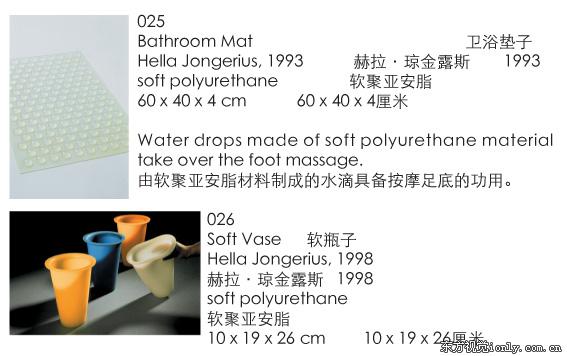
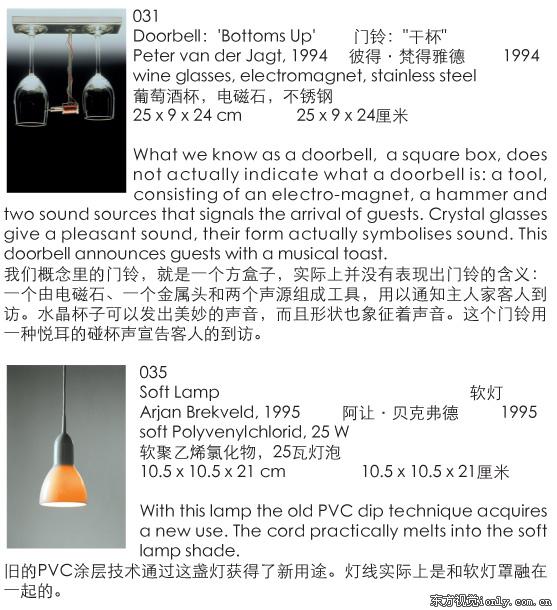
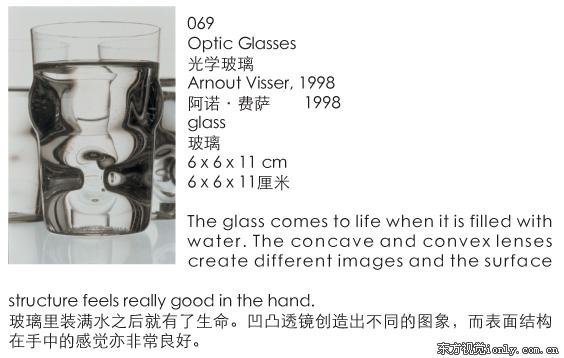
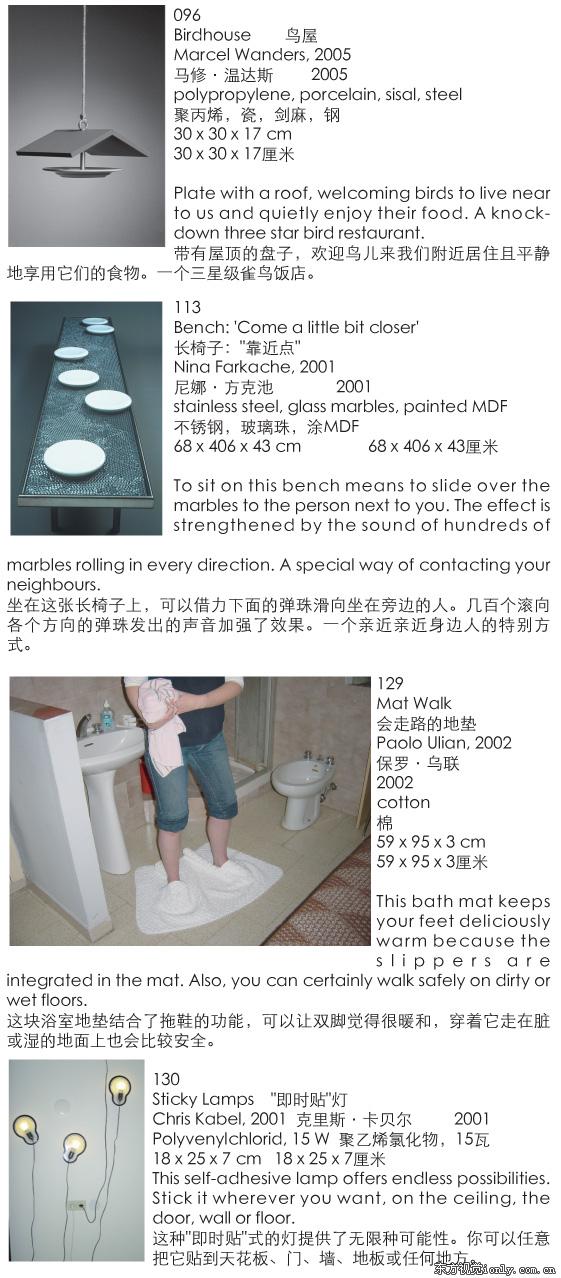
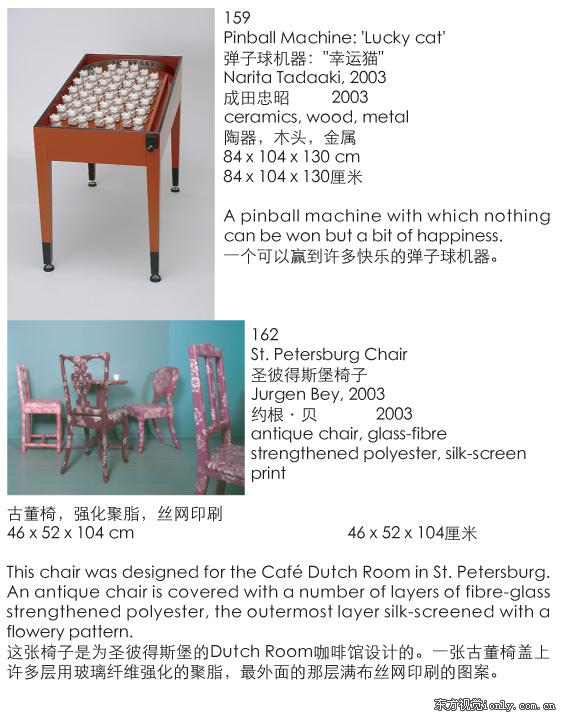
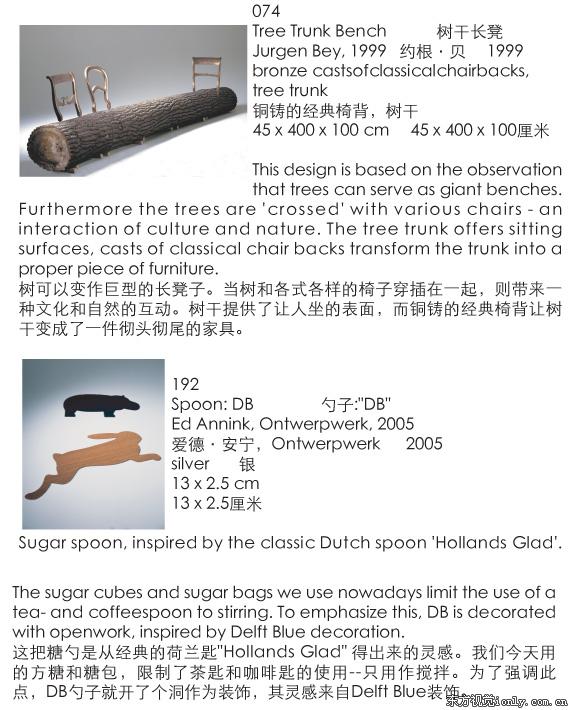
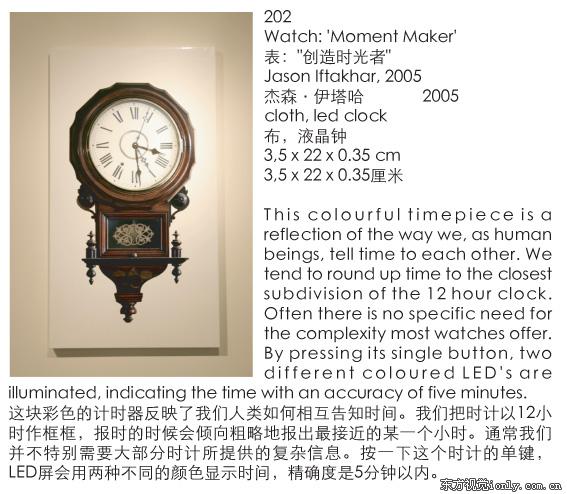
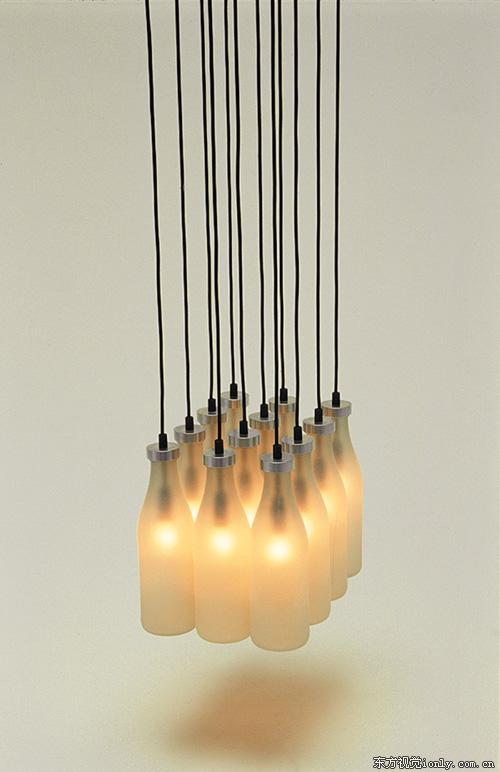
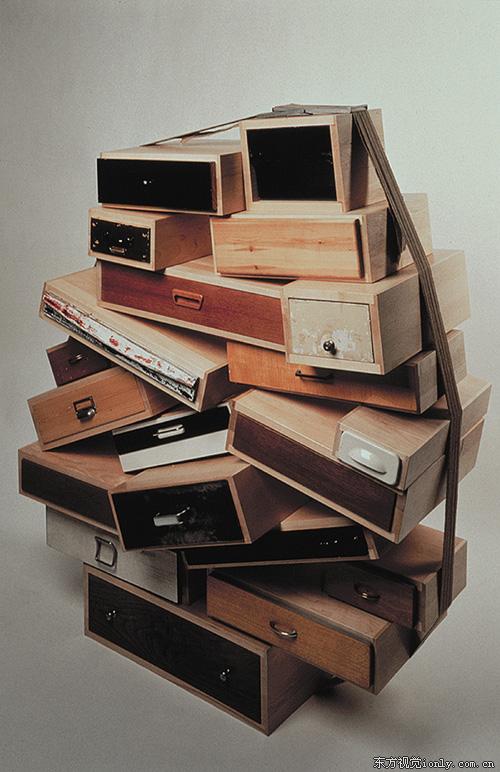
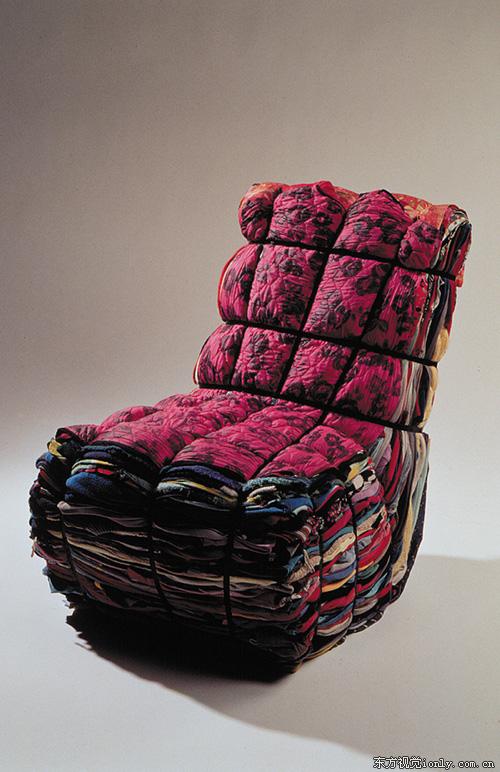
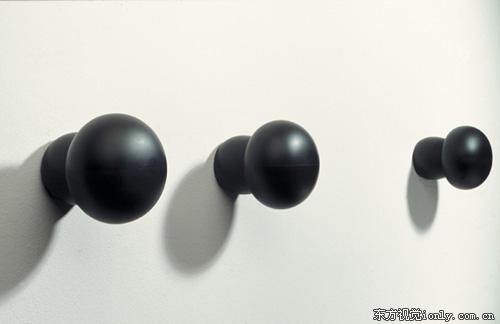
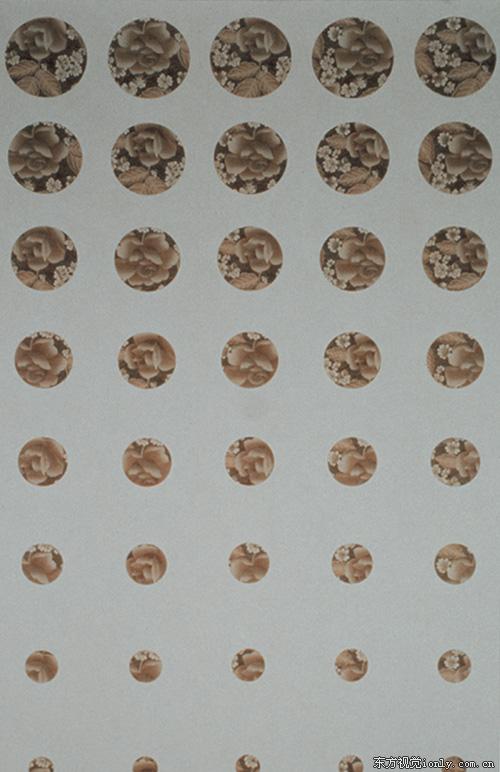
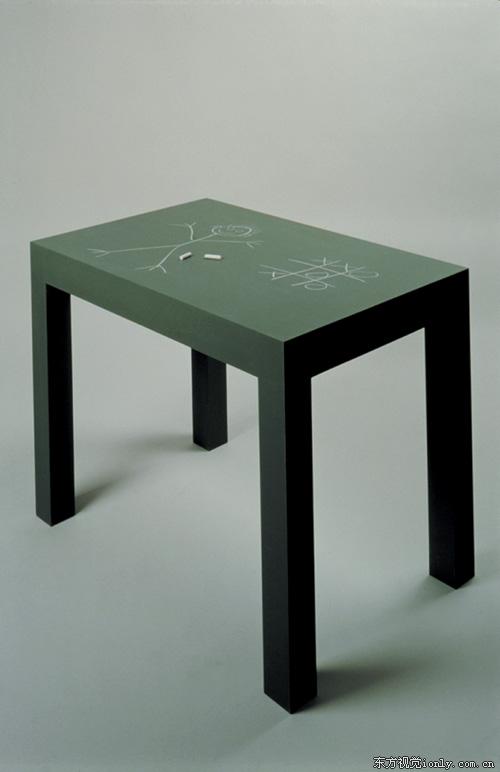
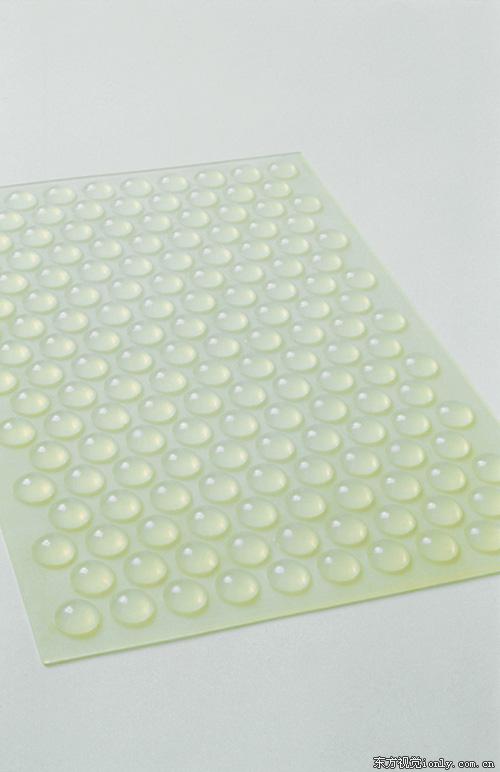
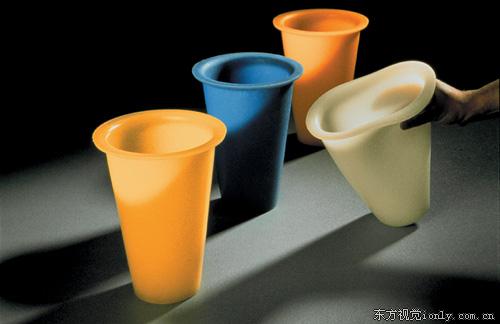
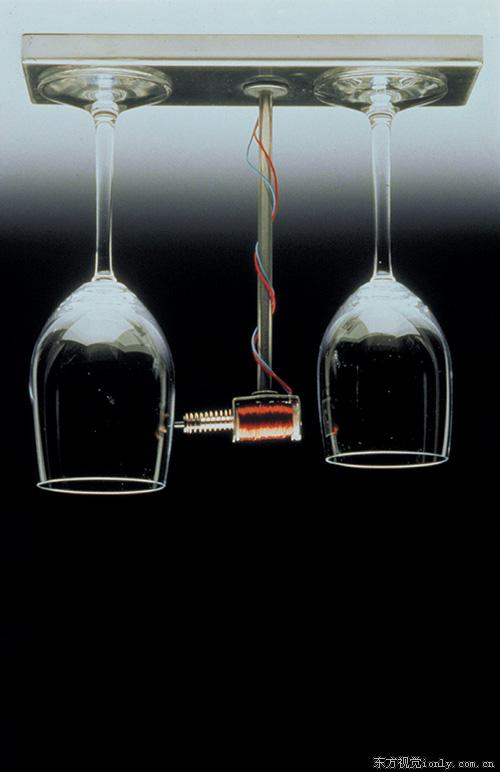
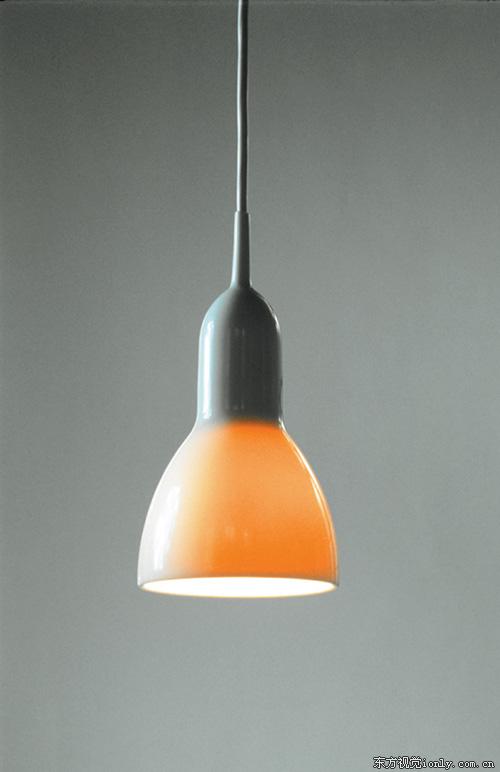
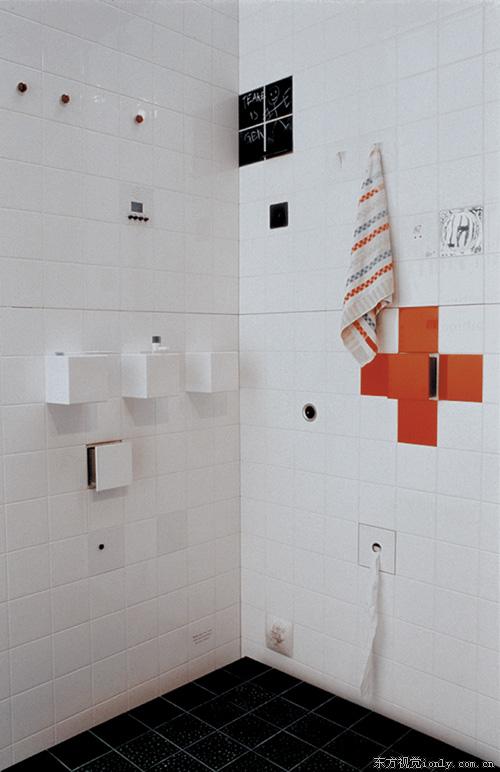
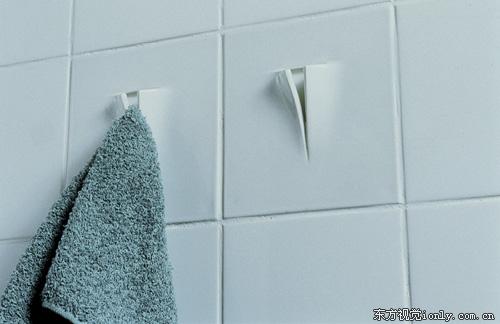
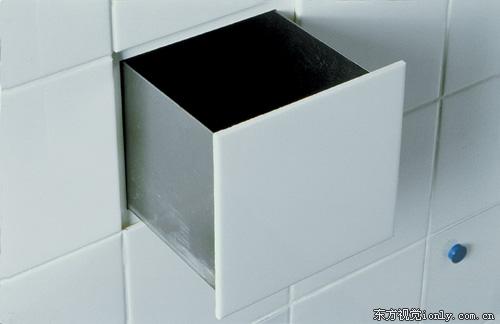
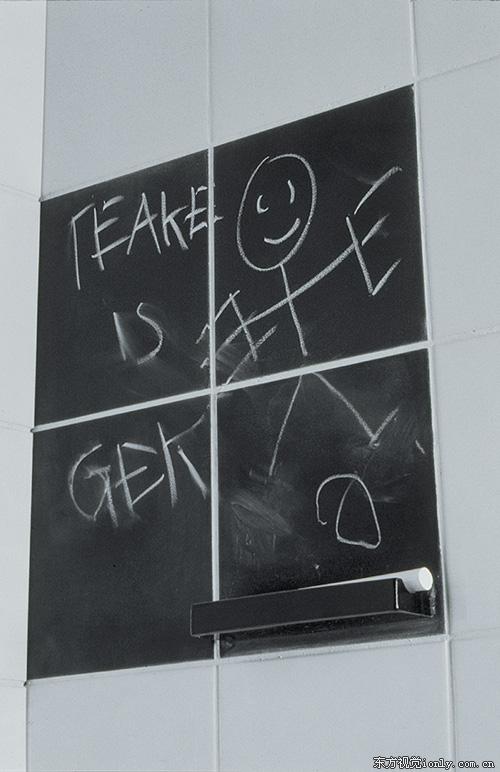
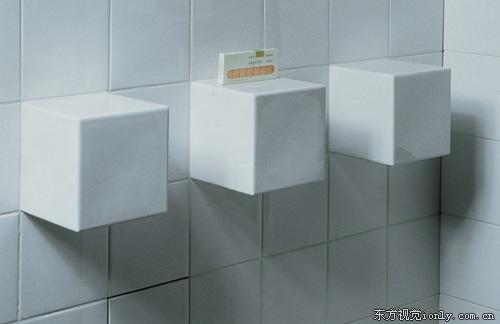
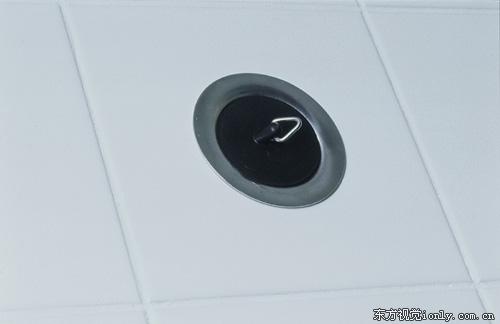
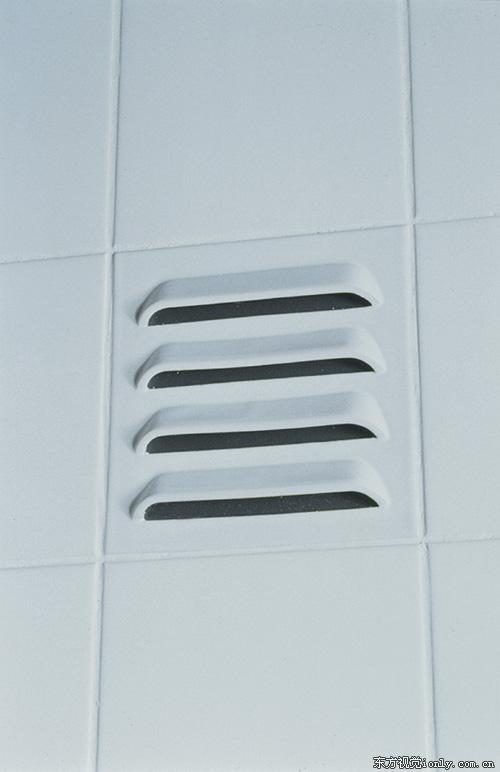
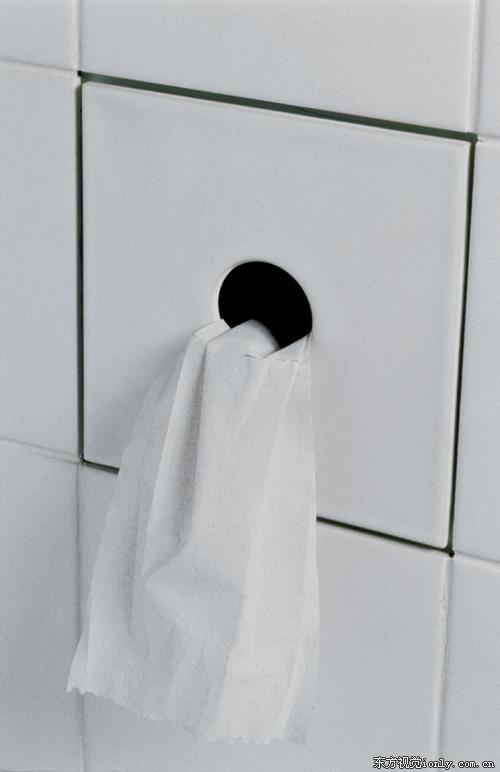
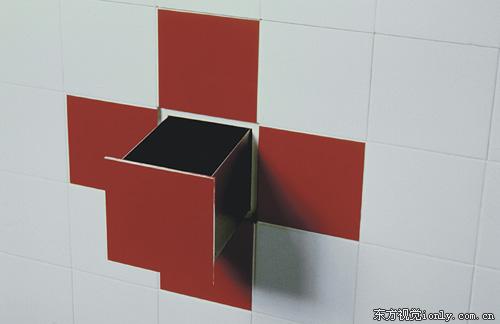
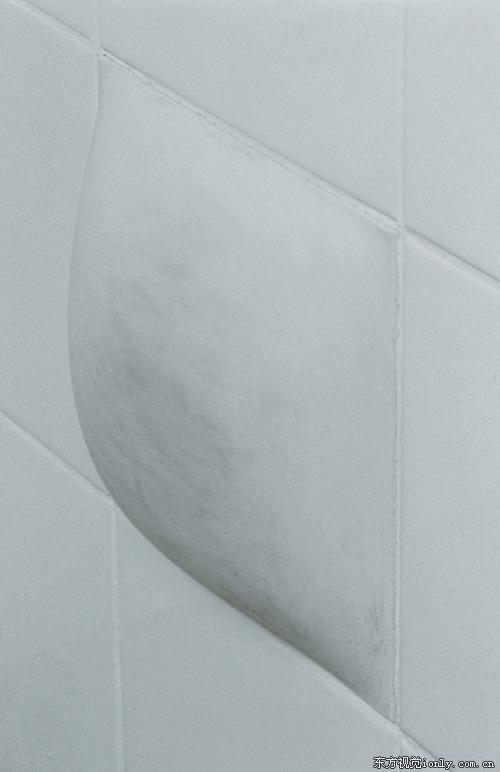
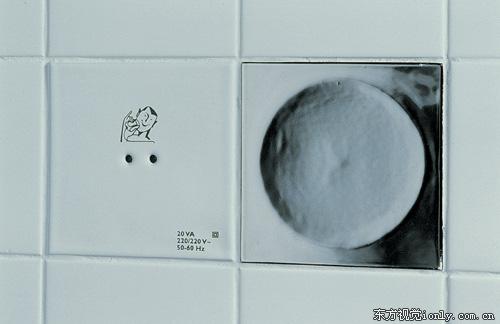
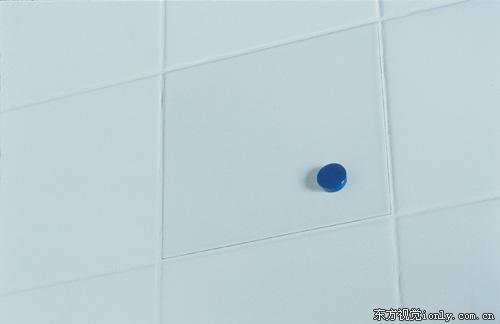
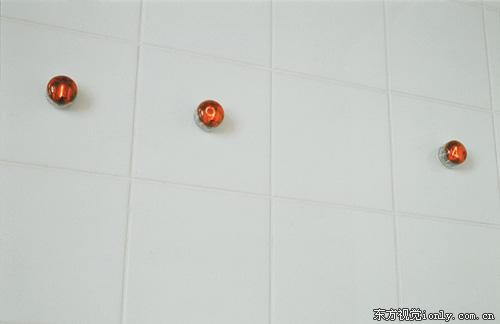
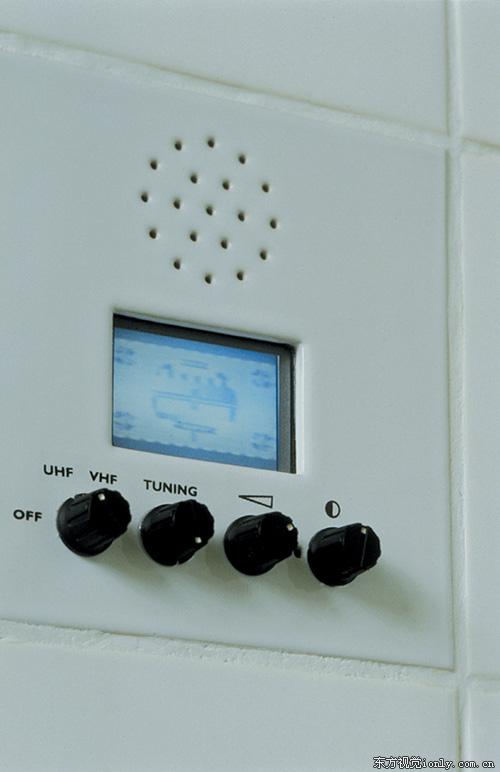
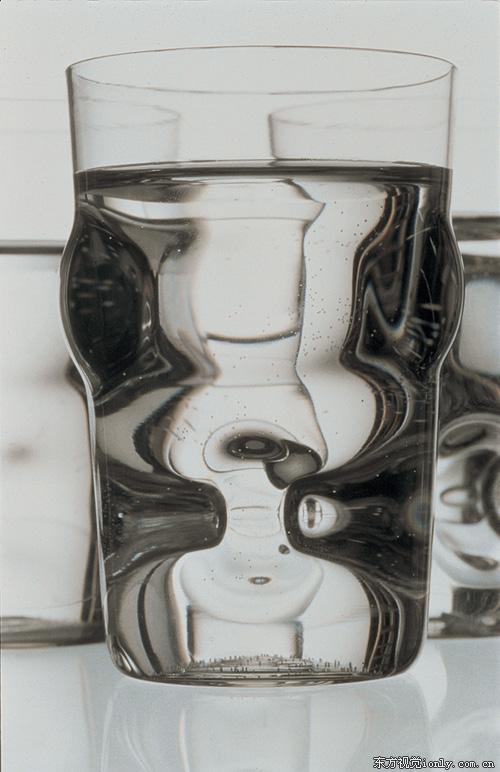
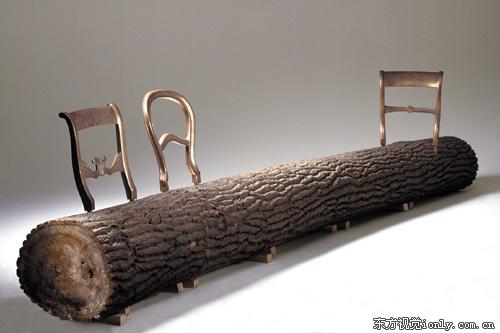
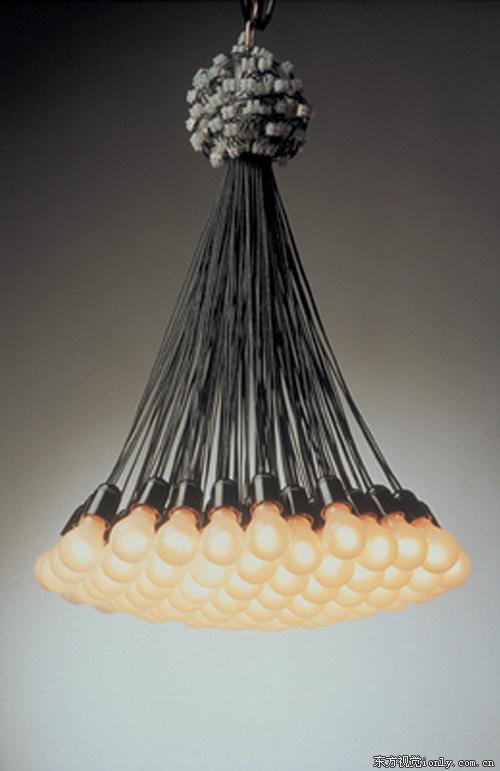
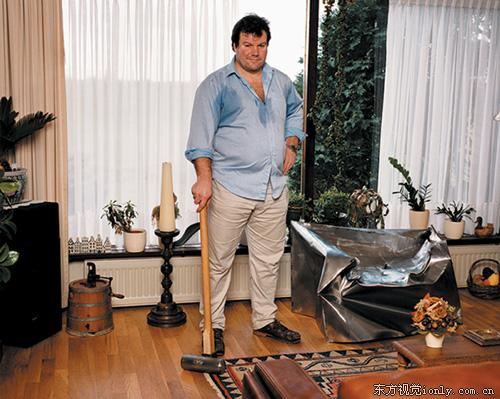
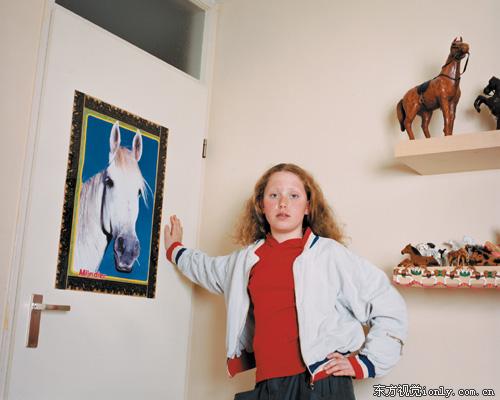
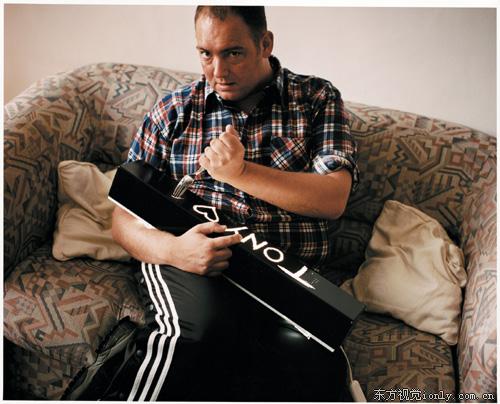
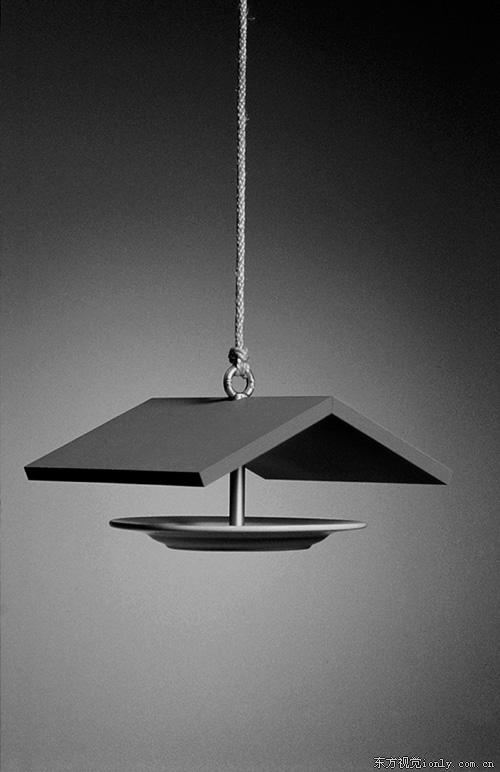
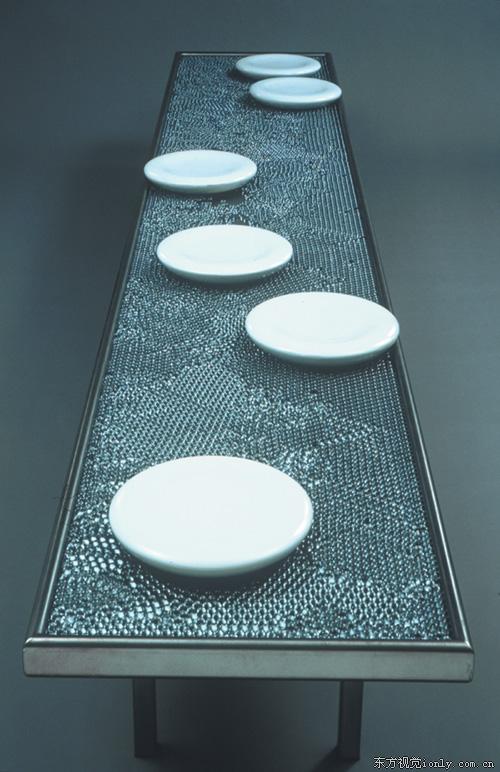
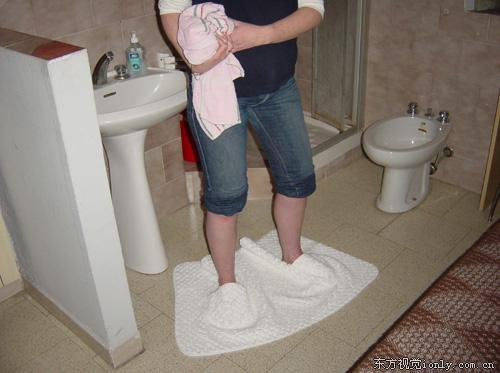
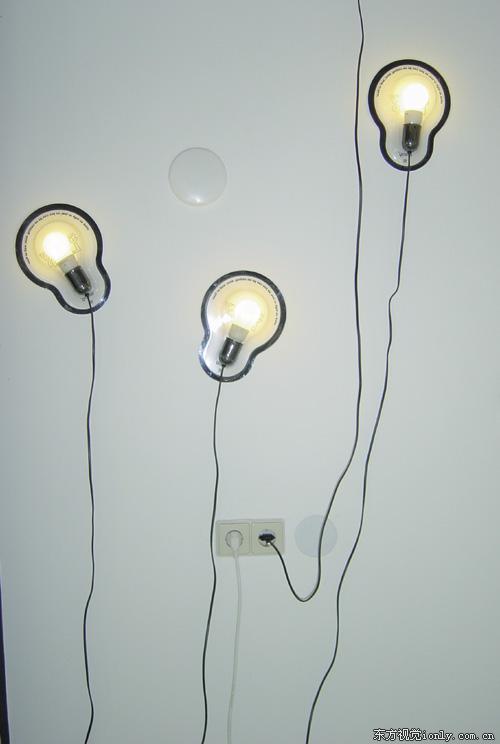
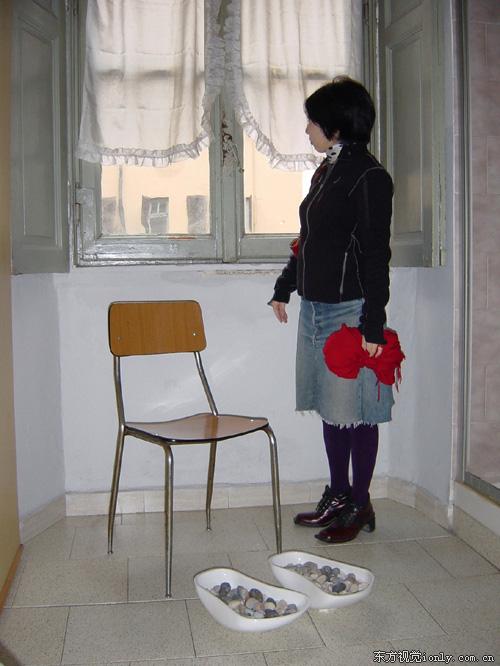
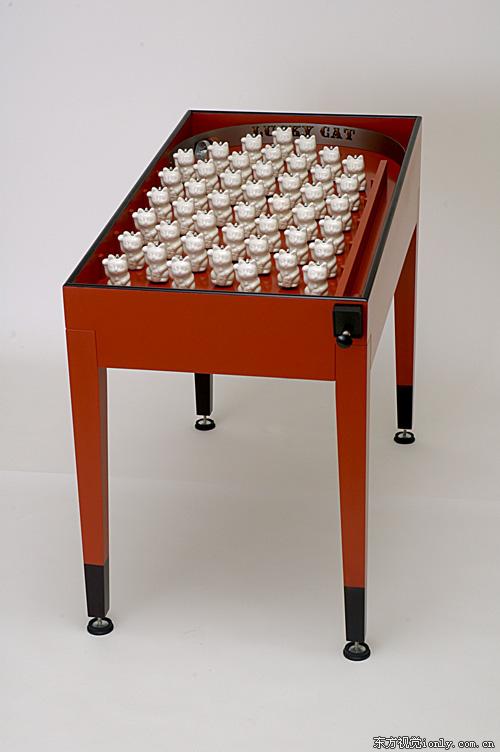
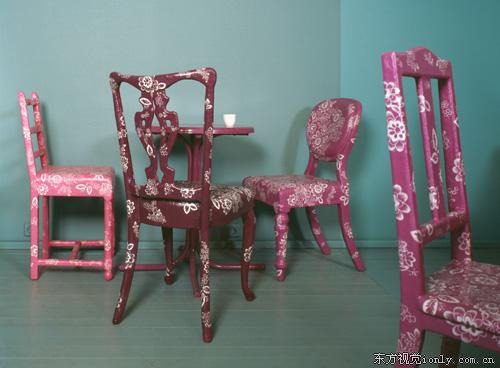
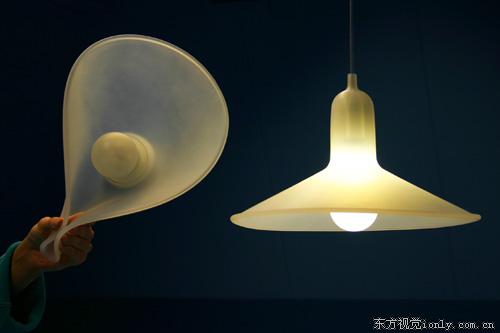
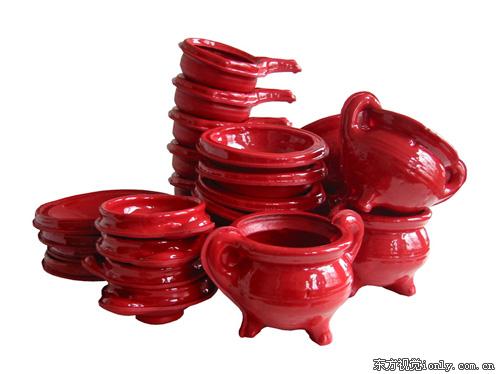
001
Table Lamp:'Set Up Shades' 台灯:“层叠灯罩”
Marcel Wanders, 1988 马修·温达斯 1988
existing lamp shades 现成的灯罩
15 x 15 x 55 cm 15 x 15 x 55 厘米
The designer only works with the lampshade here, the most archetypical part of the lamp - a completely ordinary lampshade, bought in an ordinary shop. Instead of using one shade for his lamp he stacks many shades on each other.
设计师在这里只采用在普通商店里买到的最普通灯罩(灯最原型的部分)进行设计。他没有只采用一个灯罩,而是将多个灯罩重叠起来。
004
Oil and Vinegar Set: 'Salad Sunrise' 油及醋盛器组合:“日出沙拉”
Arnout Visser, 1990 阿诺·费萨 1990
pyrex glass 耐热玻璃
6 x 6 x 18 cm 6 x 6 x 18厘米
This oil and vinegar set is based on the phenomenon that oil floats on vinegar.
这套油及醋组合是按油浮于醋上的现象而设计的。
011
Milkbottle Lamp 牛奶瓶灯
Tejo Remy, 1991 提奥·林美 1991
milkbottles, 15 W, stainless steel 牛奶瓶,15瓦灯泡,不锈钢
26 x 37 x 310 cm max. 最大为26 x 37 x 310厘米
The milk bottles hang on long cables just above the floor, always twelve at a time – three rows each of four bottles, just like the Dutch milk crates in the old days.
牛奶瓶用长长的绳子吊在地板上方,每组总有12个瓶子——分成3排,每排4个瓶子,就象荷兰传统的牛奶箱一般。
013
Chest of Drawers 抽屉柜
Tejo Remy, 1991 提奥·林美 1991
used drawers, maple, jute strap 旧抽屉,枫木箱,亚麻带子
60 x 110 x 120 cm 60 x 110 x 120厘米
Improvised chest, composed of 20 old drawers put in a wooden case, piled up and bound together with a belt. Remy's chest of drawers not only turns its back on superficial, elegant design, but also criticises both the excess and the consumer mania that pervades the world. The chest has no fixed form; the drawers can be combined and exchanged at will.
即兴制作的柜子,由放在木头盒中的20个旧抽屉组成,这些旧抽屉堆在一起,用一根带子捆着。林美的抽屉柜不仅推翻了文雅但肤浅的设计,还对全世界的无节制消费进行了批判。这个柜子没有固定的形式;抽屉可以随意地进行组合和互换位置。
015
Rag Chair 碎布椅
Tejo Remy, 1991 提奥·林美 1991
used clothes, metal strips 旧布,金属条
60 x 60 x 110 cm 60 x 60 x 110厘米
This chair came into being as a criticism of the materialism and of the flood of products in our society. Tejo Remy wanted to start again from the beginning, like Robinson Crusoe on his lonely island, living on whatever can be found.
这个椅子对物质主义和社会的过度生产进行了批判。提奥·林美希望可以从头再来,就如同荒岛上的鲁宾逊,靠可以找到的东西为生。
016
Table-Chair 桌-椅
Richard Hutten, 1991 李察·赫顿 1991
birch, MDF painted white 桦木,MDF涂白
60 x 60 x 71 cm 60 x 60 x 71厘米
Many designs by Richard Hutten are based on the archetypical table. By repetition, piling up and changing the measurements of the basic elements a new image comes into being.
李察·赫顿的许多设计是基于桌子的原型。通过重复、堆叠及改变基本元素的尺寸,一个新的形象就诞生了。
018
Soft Knob 软门把手
Ed Annink, 1992 爱德·安宁 1992
soft polyurethane 软聚亚安脂
13 x 13 x 15 cm 13 x 13 x 15厘米
Sometimes we do not see familiar objects unless they come in other materials, sizes or contexts. These soft, mushroom-shaped knobs can be used in all sorts of ways.
我们有时看不见一些熟悉的物体,除非它们以另外的材料、尺寸或背景出现。这些软软的、蘑菇形状的把手可以多种方法使用。
019
Wallpaper: 'Peepshow' 墙纸:“偷窥”
Gijs Bakker, 1992 赫斯·贝克 1992
high quality craft paper 高品质牛皮纸
65 x 320 cm 65 x 320厘米
This wallpaper with holes gives the old wallpaper a new look. The visual result depends less on the wallpaper itself and much more on the wall behind. The starting point is the interplay between the old and new wall coverings.
这张带洞洞的墙纸赋予了旧墙纸新面貌。视觉的效果则依赖于后面的旧墙多于新墙纸本身,表现出墙上的新旧遮盖物之间的相互影响。
021
Chandelier: ‘85 Lamps' 吊灯:“85个灯”
Rody Grauman, 1993 罗迪·加劳曼 1993
85 bulbs 15 W, standard fittings, dimmer 85个15瓦灯泡,标准配置,调光器
70 x 70 x 110 cm 70 x 70 x 110厘米
The individual parts of this lamp are completely plain but the combination makes of them an opulent chandelier. Less and more, united in a single product.
这盏灯的每个组成个体非常简单平凡,但组合之后的整体则是一个华丽的吊灯。简约与华丽,在同一件产品中同时获得体现。
022
Vase: 'Urn' 瓶:“瓮”
Hella Jongerius, 1993 &
Table Lamp:'Set Up Shades' 台灯:“层叠灯罩”
Marcel Wanders, 1988 马修·温达斯 1988
existing lamp shades 现成的灯罩
15 x 15 x 55 cm 15 x 15 x 55 厘米
The designer only works with the lampshade here, the most archetypical part of the lamp - a completely ordinary lampshade, bought in an ordinary shop. Instead of using one shade for his lamp he stacks many shades on each other.
设计师在这里只采用在普通商店里买到的最普通灯罩(灯最原型的部分)进行设计。他没有只采用一个灯罩,而是将多个灯罩重叠起来。
004
Oil and Vinegar Set: 'Salad Sunrise' 油及醋盛器组合:“日出沙拉”
Arnout Visser, 1990 阿诺·费萨 1990
pyrex glass 耐热玻璃
6 x 6 x 18 cm 6 x 6 x 18厘米
This oil and vinegar set is based on the phenomenon that oil floats on vinegar.
这套油及醋组合是按油浮于醋上的现象而设计的。
011
Milkbottle Lamp 牛奶瓶灯
Tejo Remy, 1991 提奥·林美 1991
milkbottles, 15 W, stainless steel 牛奶瓶,15瓦灯泡,不锈钢
26 x 37 x 310 cm max. 最大为26 x 37 x 310厘米
The milk bottles hang on long cables just above the floor, always twelve at a time – three rows each of four bottles, just like the Dutch milk crates in the old days.
牛奶瓶用长长的绳子吊在地板上方,每组总有12个瓶子——分成3排,每排4个瓶子,就象荷兰传统的牛奶箱一般。
013
Chest of Drawers 抽屉柜
Tejo Remy, 1991 提奥·林美 1991
used drawers, maple, jute strap 旧抽屉,枫木箱,亚麻带子
60 x 110 x 120 cm 60 x 110 x 120厘米
Improvised chest, composed of 20 old drawers put in a wooden case, piled up and bound together with a belt. Remy's chest of drawers not only turns its back on superficial, elegant design, but also criticises both the excess and the consumer mania that pervades the world. The chest has no fixed form; the drawers can be combined and exchanged at will.
即兴制作的柜子,由放在木头盒中的20个旧抽屉组成,这些旧抽屉堆在一起,用一根带子捆着。林美的抽屉柜不仅推翻了文雅但肤浅的设计,还对全世界的无节制消费进行了批判。这个柜子没有固定的形式;抽屉可以随意地进行组合和互换位置。
015
Rag Chair 碎布椅
Tejo Remy, 1991 提奥·林美 1991
used clothes, metal strips 旧布,金属条
60 x 60 x 110 cm 60 x 60 x 110厘米
This chair came into being as a criticism of the materialism and of the flood of products in our society. Tejo Remy wanted to start again from the beginning, like Robinson Crusoe on his lonely island, living on whatever can be found.
这个椅子对物质主义和社会的过度生产进行了批判。提奥·林美希望可以从头再来,就如同荒岛上的鲁宾逊,靠可以找到的东西为生。
016
Table-Chair 桌-椅
Richard Hutten, 1991 李察·赫顿 1991
birch, MDF painted white 桦木,MDF涂白
60 x 60 x 71 cm 60 x 60 x 71厘米
Many designs by Richard Hutten are based on the archetypical table. By repetition, piling up and changing the measurements of the basic elements a new image comes into being.
李察·赫顿的许多设计是基于桌子的原型。通过重复、堆叠及改变基本元素的尺寸,一个新的形象就诞生了。
018
Soft Knob 软门把手
Ed Annink, 1992 爱德·安宁 1992
soft polyurethane 软聚亚安脂
13 x 13 x 15 cm 13 x 13 x 15厘米
Sometimes we do not see familiar objects unless they come in other materials, sizes or contexts. These soft, mushroom-shaped knobs can be used in all sorts of ways.
我们有时看不见一些熟悉的物体,除非它们以另外的材料、尺寸或背景出现。这些软软的、蘑菇形状的把手可以多种方法使用。
019
Wallpaper: 'Peepshow' 墙纸:“偷窥”
Gijs Bakker, 1992 赫斯·贝克 1992
high quality craft paper 高品质牛皮纸
65 x 320 cm 65 x 320厘米
This wallpaper with holes gives the old wallpaper a new look. The visual result depends less on the wallpaper itself and much more on the wall behind. The starting point is the interplay between the old and new wall coverings.
这张带洞洞的墙纸赋予了旧墙纸新面貌。视觉的效果则依赖于后面的旧墙多于新墙纸本身,表现出墙上的新旧遮盖物之间的相互影响。
021
Chandelier: ‘85 Lamps' 吊灯:“85个灯”
Rody Grauman, 1993 罗迪·加劳曼 1993
85 bulbs 15 W, standard fittings, dimmer 85个15瓦灯泡,标准配置,调光器
70 x 70 x 110 cm 70 x 70 x 110厘米
The individual parts of this lamp are completely plain but the combination makes of them an opulent chandelier. Less and more, united in a single product.
这盏灯的每个组成个体非常简单平凡,但组合之后的整体则是一个华丽的吊灯。简约与华丽,在同一件产品中同时获得体现。
022
Vase: 'Urn' 瓶:“瓮”
Hella Jongerius, 1993 &
牛比
画册白买了,妈的!嘿社会牛比的/!
lao zi yao gao ni
[fly]COME ON BABY[/fly]
.
wo cao niu bi da le
.
wo cao niu bi da le
.
hao tie zi
拍~~~ !
顶好贴
老公你放心,我不会跟顶贴超人跑的.*>_<*
太牛了,这是我在网上查到最详尽的关于droog的资料